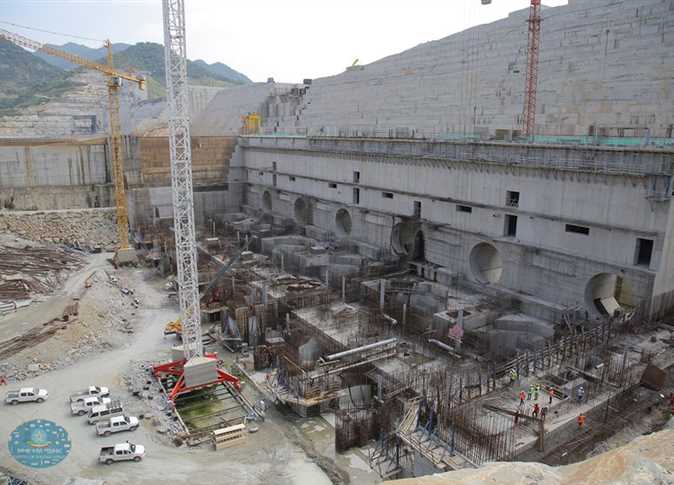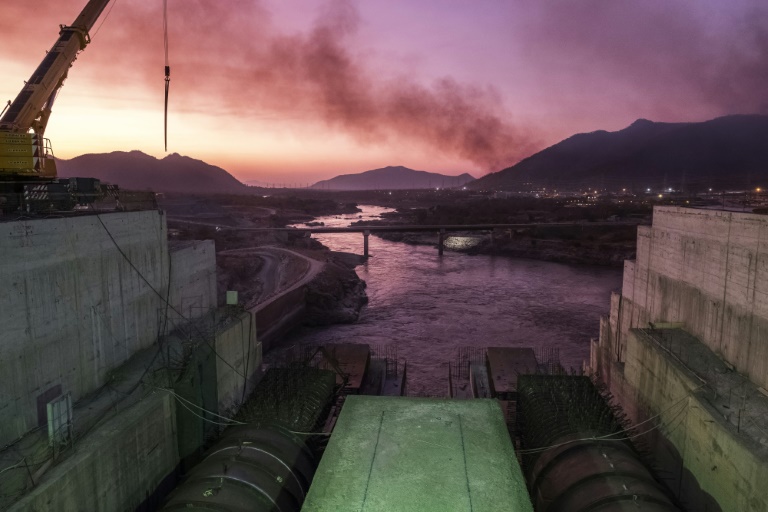Aswan– On 15 January 1971, Egypt celebrated the completion of the High Dam, whose funding was the center of a Cold War dispute that led to the 1956 Suez War. Located on the Upper Nile, around 1000km downstream from Cairo, the gigantic mountain of concrete and steel is among the 20th century’s most elaborate engineering work.
The construction of the High Dam began in 1960, and it was officially inaugurated ten years later, at a cost of US$1 billion, much of which was provided by the former Soviet Union. The dam stores 160 billion cubic meters of water, and the reservoir behind it, named Lake Nasser, stretches some 350km into Egypt and 150km into Sudan.
The celebration of the High Dam’s Golden Jubilee is a special occasion for Ibrahim Abu Zaid head of the High Dam Authority. In an exclusive interview with Al-Masry Al-Youm, Abu Zaid was confident the structure needed no renovations and would survive indefinitely.
Al-Masry Al-Youm: What did you do before joining the High Dam Authority last year?
Ibrahim Abu Zaid: I have been an employee in the ministry of water and irrigation since 1977. I worked in the delta city Mansoura where I was born, then Cairo, then Daqahlia then Sudan. I held different titles, but this recent one is very special.
Al-Masry: Why is it special?
Abu Zaid: This is the central water bank of Egypt. My job here is to keep it safe and monitor all the horizontal and vertical movements of the dam and monitor any water leakage. I also enforce the [Irrigation] Ministry’s policies, monitoring and maintaining all the Dam’s related facilities and annexes like the Toshka canal and the emergency dam.
Al-Masry: How often do you run restorations to the dam?
Abu Zaid: We never do. All the reports say the dam is perfectly fit and young as if it was built only yesterday.
Al-Masry: But last year you got a German grant to restorate the dam, right?
Abu Zaid: The grant was for security enhancement, monitoring of the dam, and renovation work for Aswan Dam–the old dam that dates back to 1906.
Al-Masry: What kind of dangers are you securing the dam from?
Abu Zaid: I personally see no dangers or threats, but we have to be cautious, just in case. A few years ago you didn’t expect a terrorist to blow up a mosque or a church, but it happened and we can’t wait until someone even thinks about touching the dam. The [Egyptian] army has the strength to protect the High Dam from any possible danger. The dam is secured and monitored 24/7 by cameras
Al-Masry: Back in the 1960s the dam was the symbol of Egypt’s economic and political independence. What does it symbolize today?
Abu Zaid: It is a symbol for Egyptians patience and challenge. It is also a reminder that Egypt can come up with great projects like this all the time. I worked in Sudan and saw what the Nile can do if not controlled. It becomes like a monster that can eat houses, people, and towns.
Al-Masry: Before the dam was built, the banks of the Nile were flooded once a year with fertile silt and sediments; those sediments now remain behind the dam at the bottom of Lake Nasser. This has caused erosion along the coast and less fertile coastal waters for fish and other organisms.
Abu Zaid: We do research twice a year, one in Egypt and the other in Sudan, to see the level of sediments and I assure you it is very low and it is mostly in the Sudanese part of lake Nasser. If it is worth it we will consider moving it, and investing in it, but right now it is not worth the cost.
Al-Masry: What are the hardest challenges that you face on a daily basis?
Abu Zaid: There are no challenges. Work here is very organized and simple. I am only protecting a complete and perfect project that needs no additions.




